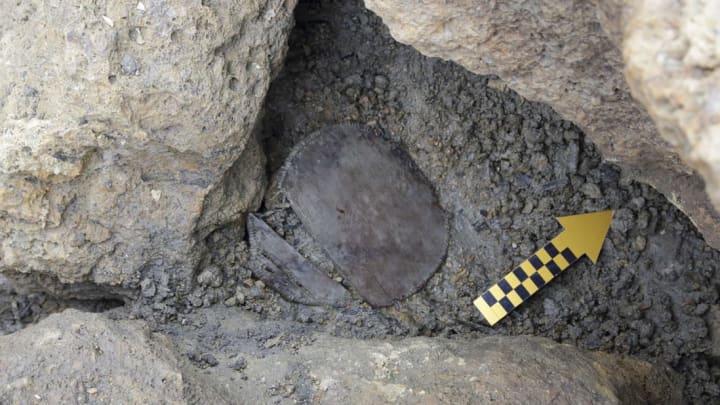Around 3500 years ago, a traveler forging their way through a mountain pass in the Swiss Alps may have dropped their lunch box. As the International Business Times reports, archaeologists studying a Bronze Age wooden container discovered some 8500 feet above sea level found molecular traces of ancient "cereal": wheat and barley or rye grains. These contents could help experts learn more about how farming emerged in Europe during the Bronze Age, according to the researchers' new study published in the journal Nature Scientific Reports.
The circular wooden container was discovered in a melting ice patch in 2012. Its base was made from Swiss pine and its rim from willow sewn together with European larch twigs. Its lightweight frame would have made it ideal for toting across the Alps.



Artifacts made from organic materials like wood often don’t survive in the archaeological record, making the box an extremely rare find. Noting a mysterious residue on its central surface, researchers from Germany's Max Planck Institute for the Science of Human History and the University of York used microscopic and molecular analyses to see what kind of food the container once held.
Like all organic material, plants degrade over time, but thanks to new advances in technology, archaeologists can sometimes identify the lipids and proteins left behind on empty vessels. This can help them learn what people were eating and drinking long ago.
Researchers were expecting to find a milk residue left by porridge or some other type of food, so they were surprised to discover lipid-based biomarkers called alkylresorcinols that came from wheat or rye grain.
"One of the greatest challenges of lipid analysis in archaeology has been finding biomarkers for plants," said the paper's lead author, University of York bioarchaeologist André Colonese, in a news release. "There are only a few, and they do not preserve very well in ancient artifacts. You can imagine the relevance of this study, as we have now a new tool for tracking early culinary use of cereal grains—it really is very exciting. The next step is to look for them in ceramic artifacts."
The domestication and transmission of cereals was important to the emergence of farming, but archaeologists rarely find direct evidence of grain's early use. This discovery could help them learn more about how farming developed in Eurasia, and how important cereals were for both farmers and the general economy.
[h/t Archaeology]
